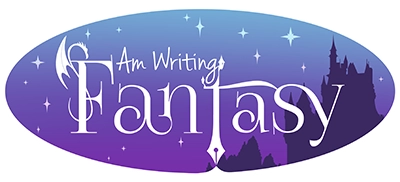Have you ever wanted to do someone in?
Okay, I’m not asking for confessions here, so consider that question rhetorical. 😉 But I am willing to bet that you are a good person. You think of your loved ones and are kind to animals, I’m sure. I’m also willing to bet you’ve wanted to punch someone in the face, run another driver off the road, or seriously, even if momentarily, wished someone harm.
It is just life. You are still a good person.
Now how about the “good” characters in your novel?
A Game of Thrones has inspired characters who contain such strong good qualities, like honor or justice, that it can lead to his or her death. And writing classes teach developing characters with strengths and weaknesses to make them well rounded. A heroine can be a skilled warrior AND too self assured. This makes a more complex character, one that is beyond two dimensions.
But what about a good character that just loses it and takes the first punch?
A recent article in Atlas Obscura on the historic prevalence of poisoning by arsenic and the Marsh test, which finally led to a reduction in this “at home” method of dealing with unwanted “loved” ones, floored me at the once commonality of poisoning. Surely all those people secretly slipping a family member or neighbor a bit of arsenic were not evil people. They loved, smiled, did good deeds. Just something about that one person in their lives, along with easy access to an untraceable toxic substance that mimicked dozens of other illness, pushed them to do something not-so-good.
Come on, who hasn’t wished for such a solution, at least momentarily and only in a heated moment, once? Just to take care of that special someone who really gets under your skin…
We, as authors, usually deal with such annoying people by turning them into characters and then tormenting the heck out of them until we kill them off – all fictionally, of course! The method is very therapeutic, but hardly makes good writing. Who wants readers wondering why we have it out for poor “Harry?” That would be an awkward question!
What does make good writing and develops a character more than simply adding a weakness or over strengthening a “good” quality is to simply let our heroes have not-so-good moments. Let them say something petty in anger, strike first, or just do something that is a little mean, like kicking a puppy. Ok, maybe not kick a puppy – that’s just cruel, but you see what I mean.
Being good doesn’t mean a character never makes a mistake or lashes out in anger. It just means they’ll regret it later.
Let your characters act human, which means sometimes screwing up and being a pain. A perfect hero who never doubts, fails, or makes a mistake is unbelievable. One with doubts, occasional mis-steps, and actions they need to make up for is much more relatable to the reader and far more interesting.
In my writing, I’ve used this technique a few times. I’m a big fan of friends sometimes having a falling out. After weeks and weeks of hiking, risking your life and the lives of people you care about all for one person’s crazy quest… tempers HAVE to flare. Characters, even the best of friends, will occasionally NOT get along. Let’s not forget about lovers’ spats after the puppy love has worn off. It doesn’t make characters less in love. Really, it might make them more since only dedication and deep friendship will over come petty annoyances.
But I’ve also had my “good guys” strike first such as in Spirit of Life where they deliver a blow that began as a mission to rescue the son of a friend. Instead, it goes horribly wrong when the heroes take out frustrations against the captors which provides fuel for the enemy, who now has some strong retribution to deliver.
A momentary lapse in judgement can add more than realism to your storyline. It is the seed of subplots. Friendships can be shaken (for at least a few chapters!), regrets harbored that fuel an internal change, and, in really grievous cases of misjudgment, begins a cycle of revenge.
Spice up your book plot and characters with a bit of misdirected anger, ill-timed reactions, or simply human mistakes. Readers will understand. They’ve felt the same way too.
What about you? Would you let your characters have a mini-breakdown? Have you? Share in the comments!










Read through the whole thing and really took on this advice! I’m struggling with this current situation at the moment, wondering I’ve shown off enough of my characters flaws to make them human/realistic, and this has helped. Thanks for the advice!
I’m so happy this clicked with you, Harrison! It is such a strong tendency to want our heroes to be good with maybe a weakness here and there. But I think mistakes and moments of stupid choices hold so much greater depth than planning out a flaw. Personalities have so much more nuance than that!